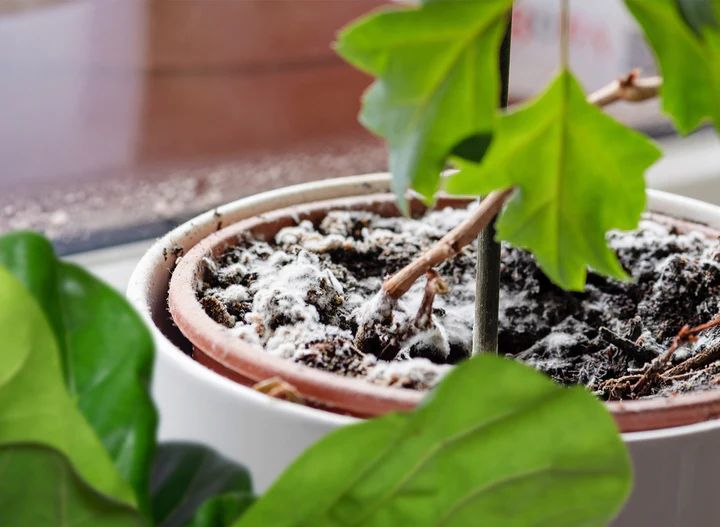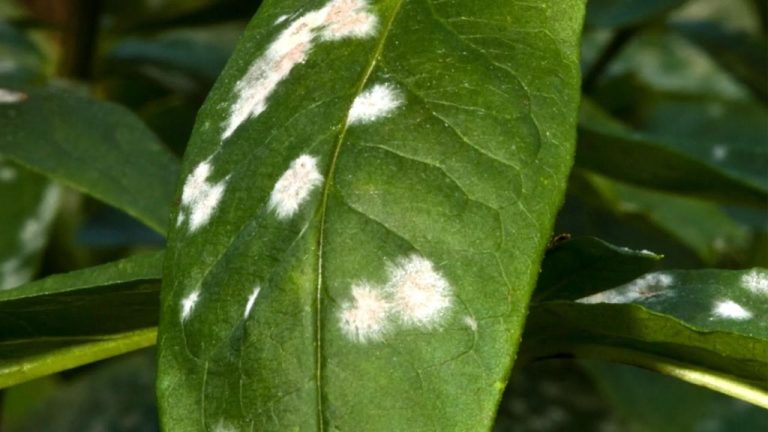Combatting Apple Maggots: Protecting Your Apple Trees
The apple maggot (Rhagoletis pomonella) is a major pest of apple trees in North America. These flies lay their eggs inside developing apples, and the larvae feed on the fruit’s flesh, leaving brown trails of decay. Infested fruits become deformed and pitted, and often drop prematurely from the tree.
According to a recent study by the USDA, apple maggot damage causes up to $168 million in lost revenue for apple growers each year in the United States alone. Left untreated, apple maggots can destroy up to 100% of a tree’s fruit crop in a single season. They not only affect apple trees, but also crabapples, hawthorns, and other fruit-bearing plants (Source)
Controlling apple maggots is crucial for homeowners and orchard growers wishing to harvest unblemished, edible fruit. This guide covers the life cycle, monitoring, and management strategies to combat apple maggots and protect apple trees.
Life Cycle
The apple maggot goes through four life stages: egg, larva, pupa, and adult [1]. Adult females lay eggs just under the skin of apples from late June through August. About a week later, the eggs hatch into larvae that burrow through the flesh as they feed [2]. The larvae continue feeding for 2-3 weeks before exiting the apple and burrowing into the soil to overwinter as pupae. In spring, the pupae transform into adult flies which emerge from the soil from late June through August to start the cycle again.
The key times when apple maggots are active and damaging fruit are during summer through early fall when the females are laying eggs in developing fruit, and the larvae are feeding inside apples before dropping to the ground. Being aware of their life cycle helps determine optimal times for monitoring and control measures.
Identification
Apple maggot damage is easily identifiable. The earliest sign is tiny dimples or depressions on the surface of the fruit, which are caused by the female fly puncturing the skin to lay her eggs inside [1]. As the larvae feed and tunnel through the flesh, these punctures become larger pits or trails. Infested apples, pears, and other fruits often have a misshapen, gnarled appearance.
Cutting open damaged fruit reveals the larvae inside. Apple maggot larvae are small (up to 1/4 inch), legless, and cream-colored, with a brown head. There may be several larvae burrowed inside a single piece of fruit. The tunnels and feeding damage also provide entry points for rot and fungal diseases.
Fully developed larvae emerge from the fruit to pupate in the soil. The adult apple maggot fly is about 1/4 inch long, with black bands on a light brown body and red eyes. The wings have distinct dark bands across them.
Monitoring
Monitoring apple maggot populations is an important part of an integrated pest management strategy. Traps can be used to detect the presence of adult apple maggots and determine when they first appear in the orchard (Evergreen Growers, 2022). This allows you to better time insecticide applications or other control methods.
Sticky red sphere traps imitating apples are effective for monitoring apple maggot flies. The red color attracts the adults and the sticky coating traps them (ARBICO Organics, 2022). These sphere traps are hung in the apple trees at head height along the outer edges of the canopy where they are visible to the flies but do not disrupt picking.
Checking the traps weekly throughout the growing season allows you to see when the first apple maggot flies emerge. Seeing an increase in the number trapped can also indicate population size and serve as a trigger for control measures. Careful monitoring provides valuable information to target your apple maggot management efforts.
Sanitation
One of the most effective ways to control apple maggot is through proper orchard sanitation. Fallen apples left on the ground can harbor apple maggot larvae and pupae over winter. By diligently picking up and disposing of any dropped apples, you remove prime breeding grounds for the pest (https://extension.umn.edu/yard-and-garden-insects/apple-maggot).

It’s recommended to check under apple trees at least once or twice a week during the summer and fall, when maggots are active. Pick up any fruit found on the ground and double bag it before placing in the trash. Do not compost fallen fruit, as compost piles can also allow apple maggots to survive (https://extension.usu.edu/pests/research/apple-maggot).
By cleaning up diseased, overripe, or damaged fruit quickly, you eliminate breeding sites and prevent apple maggot populations from increasing. This cultural control method is most effective when combined with monitoring, insect netting, and other integrated pest management techniques.
Physical Barriers
One effective method for protecting apple trees from apple maggots is to cover the tree trunks with sticky barriers that prevent adult flies from laying eggs in the fruit. These barriers go by names like “Maggot Barriers” or “Tanglefoot Tree Control Kits” and consist of rolls of sticky tape that wrap around the tree trunk.
According to Maggot Barriers Organic, their product provides a physical barrier that stops apple maggot flies from crawling up the tree and laying eggs. The heavy weave mesh is coated with an organic sticky substance that traps flies while allowing moisture and air to reach the trunk. These reusable barriers can be applied in the spring and removed after harvest.
Similarly, Maggot Barriers from Arbico Organics use a heavy weave mesh with non-toxic adhesive to protect developing fruit from infestation. Their product information states the barriers are easy to install and safe for the tree.
By wrapping tree trunks in physical barriers, the adult apple maggot flies are unable to access the fruit to lay their eggs. This helps break their lifecycle and reduces maggot damage to the apples. Care should be taken to monitor the barriers over time and reapply adhesive or tape as needed.
Biological Control
One natural way to combat apple maggots without chemicals is by introducing beneficial nematodes to your orchard. As explained on the Arbico Organics website, “Beneficial nematodes are microscopic, worm-like parasites that actively hunt, penetrate and destroy the pupal stage of this pest. For best results, apply in the soil under trees when apple maggot pupae start forming in the soil” (https://www.arbico-organics.com/category/apple-maggot-controls).
Beneficial nematodes such as Steinernema feltiae are not host-specific, meaning they will pursue any pest species with a life stage in the soil, including apple maggots (https://permies.com/t/61936/Nematodes-apple-maggot-control). By applying them around the base of apple trees and working them into the top layers of soil, the nematodes can find and eliminate apple maggot pupae before they can emerge as adults later in the season.
When shopping for beneficial nematodes, look for options specifically marketed for control of apple maggots and other orchard pests. Follow the product instructions for dosage and timing of application. With proper introduction of beneficial nematodes, this biological control can greatly reduce apple maggot populations without any chemical pesticides.
Insecticides
If monitoring reveals a severe apple maggot infestation, targeted application of insecticides may be the most effective control method 1. Insecticides containing esfenvalerate, carbaryl and spinosad have proven efficacy against apple maggots. However, insecticides also eliminate beneficial insects, so should be used judiciously 3. Focus applications only on problem areas of the orchard and avoid any drift onto flowering plants. Follow the spray schedule according to insecticide labels, reapplying every 7-14 days while fruit is ripening 2. Combine insecticides with sanitation methods for a multi-pronged approach. With proper monitoring and targeted spraying, insecticides can be an effective tool for severe apple maggot problems.
Resistant Varieties
Selecting apple varieties that are resistant to apple maggots can be an effective preventative strategy. According to the University of Wisconsin-Madison, some varieties that tend to be less susceptible to maggot damage include Apple Maggot – Wisconsin Horticulture:
- Empire
- Liberty
- Jonafree
- Novamac
- Priscilla
Other sources suggest Freedom, Williams Pride, Enterprise, and Goldrush may also have some resistance Pest Resistant Apple Varieties #441556. When planting new trees, prioritize these resilient varieties. For existing trees, consider diversifying with grafting to include maggot-resistant cultivars.
However, no apple variety is fully immune, so integrated pest management is still needed. Focus on preventative strategies like sanitation, traps, and biological control even with resistant trees.
Prevention
There are several effective methods for preventing future apple maggot infestations:
Sanitation – Pick up any fallen apples from the ground and dispose of them, as they can serve as breeding sites for apple maggots. Also prune trees to improve air circulation and remove any mummified fruit remaining on branches.1
Exclusion – Wrap developing fruit clusters with nylon footies or mesh bags early in the season to create a physical barrier against egg-laying adults.2
Mass Trapping – Hang sticky red spheres coated with an attractant like ammonium carbonate around the tree canopy to trap adult flies before they can lay eggs.3
Resistant Varieties – Plant apple cultivars that are less susceptible to infestation, like Red Delicious, Empire, Liberty, Prima, Priscilla, Sir Prize, and Jonafree.
Timely Harvest – Pick apples as soon as they ripen and remove any damaged/infested fruit immediately to prevent maggots from completing their life cycle.
Biological Control – Release parasitic wasps that attack apple maggot pupae in the soil to reduce populations for the following year.






